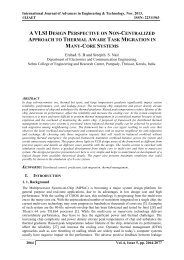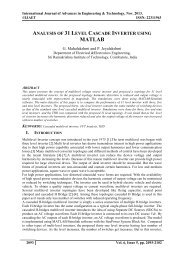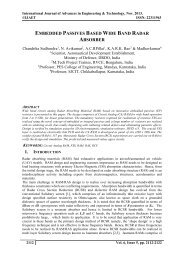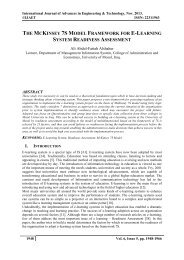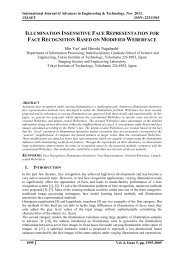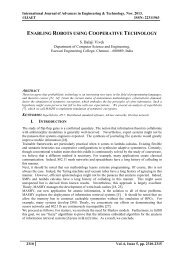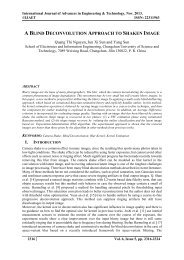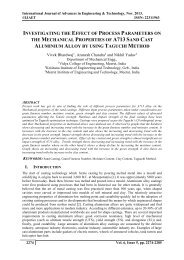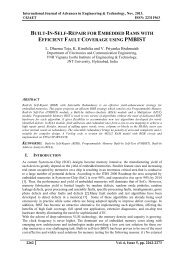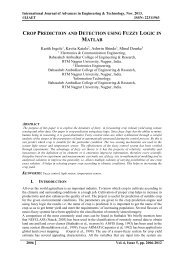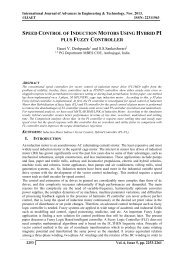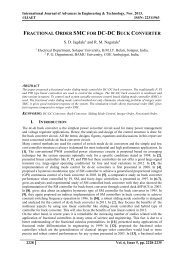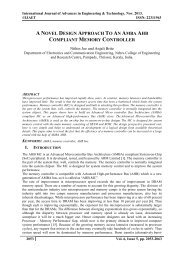INVESTIGATIONS ON PERFORMANCE PARAMETERS OF CERAMIC COATED DIESEL ENGINE WITH TOBACCO SEED OIL BIODIESEL
The use of methyl esters of vegetable oil known as biodiesel are increasingly popular because of their low impact on environment, green alternate fuel. Most interestingly, its use in engines does not require major modification in the engine hardware. Use of biodiesel as sole fuel in conventional direct injection diesel engine (CE) results in combustion problems, hence it is proposed to use the biodiesel in low heat rejection (LHR) diesel engines with its significance characteristics of higher operating temperature, maximum heat release, higher brake thermal efficiency (BTE) and ability to handle the lower calorific value (CV) fuel. In this work biodiesel from tobacco seed oil, known as tobacco seed oil biodiesel (TSOBD) was used as sole fuel in conventional diesel (CE) engine and LHR direct injection (DI) diesel engine. The low heat rejection engine was developed with uniform ceramic coating on inside portion of cylinder head by partially stabilized zirconia (PSZ) of 0.5 mm thickness. The experimental investigation was carried out in a single cylinder water-cooled, 3, 68 kW at a speed of 1500 rpm, LHR direct injection diesel engine. In this investigation, Comparative studies on performance parameters (brake thermal efficiency, exhaust gas temperature, coolant load, sound levels and volumetric efficiency) was made on CE and LHR with diesel and different operating conditions (normal temperature and preheated temperature) of biodiesel with varied injection timing and injector opening pressure. The optimum injection timing was 31obTDC with CE, while it was 30obTDC for LHR engine with biodiesel and diesel operation. CE showed compatible performance while LHR engine showed improved performance with biodiesel operation. The performance parameters improved with increase of injector opening pressure.
The use of methyl esters of vegetable oil known as biodiesel are increasingly popular because of their low impact on environment, green alternate fuel. Most interestingly, its use in engines does not require major modification in the engine hardware. Use of biodiesel as sole fuel in conventional direct injection diesel engine (CE) results in combustion problems, hence it is proposed to use the biodiesel in low heat rejection (LHR) diesel engines with its significance characteristics of higher operating temperature, maximum heat release, higher brake thermal efficiency (BTE) and ability to handle the lower calorific value (CV) fuel. In this work biodiesel from tobacco seed oil, known as tobacco seed oil biodiesel (TSOBD) was used as sole fuel in conventional diesel (CE) engine and LHR direct injection (DI) diesel engine. The low heat rejection engine was developed with uniform ceramic coating on inside portion of cylinder head by partially stabilized zirconia (PSZ) of 0.5 mm thickness. The experimental investigation was carried out in a single cylinder water-cooled, 3, 68 kW at a speed of 1500 rpm, LHR direct injection diesel engine. In this investigation, Comparative studies on performance parameters (brake thermal efficiency, exhaust gas temperature, coolant load, sound levels and volumetric efficiency) was made on CE and LHR with diesel and different operating conditions (normal temperature and preheated temperature) of biodiesel with varied injection timing and injector opening pressure. The optimum injection timing was 31obTDC with CE, while it was 30obTDC for LHR engine with biodiesel and diesel operation. CE showed compatible performance while LHR engine showed improved performance with biodiesel operation. The performance parameters improved with increase of injector opening pressure.
Create successful ePaper yourself
Turn your PDF publications into a flip-book with our unique Google optimized e-Paper software.
International Journal of Advances in Engineering & Technology, Nov. 2013.<br />
©IJAET ISSN: 22311963<br />
Though the calorific value (or heat of combustion) of fossil diesel is more than that of biodiesel; the<br />
density of the biodiesel was higher therefore greater amount of heat was released in the combustion<br />
chamber leading to higher exhaust gas temperature with conventional engine, which confirmed that<br />
performance was compatible with conventional engine with biodiesel operation in comparison with<br />
pure diesel operation. Similar findings were obtained by other studies [21].<br />
Figure. 6. Bar charts showing the variation of exhaust gas temperature (EGT) at peak load operation with test<br />
fuels at recommended and optimized injection timings at an injector opening pressure of 190 bar.<br />
From the Table.5, it is noticed that the exhaust gas temperatures of preheated biodiesel were higher<br />
than that of normal biodiesel, which indicates the increase of diffused combustion [35] due to high<br />
rate of evaporation and improved mixing between methyl ester and air. Therefore, as the fuel<br />
temperature increased, the ignition delay decreased and the main combustion phase (that is, diffusion<br />
controlled combustion) increased [35] which in turn raised the temperature of exhaust gases. The<br />
value of exhaust gas temperature decreased with increase in injector opening pressure with test fuels<br />
as it is evident from the Table.5. This was due to improved spray characteristics of the fuel with<br />
increase of injector opening pressure.<br />
Exhaust gas temperature was lower with diesel operation with conventional engine when compared<br />
with biodiesel operation, while EGT was lower with LHR engine with biodiesel operation in<br />
comparison with diesel operation. Hence conventional engine was more suitable for diesel operation,<br />
while LHR engine was suitable for biodiesel operation.<br />
Table.5. Data of Exhaust Gas Temperature (EGT) and Coolant Load at Peak Load Operation<br />
Injection Test Fuel<br />
EGT at peak load operation<br />
(degree centigrade)<br />
Coolant load at peak load operation<br />
(kW)<br />
Timing<br />
Injector Opening Pressure (Bar) Injector Opening Pressure (Bar)<br />
( o bTDC)<br />
190 230 270 190 230 270<br />
NT PT NT PT NT PT NT PT NT PT NT PT<br />
27(CE)<br />
DF 425 -- 410 --- 395 -- 4.0 --- 4.2 -- 4.4 ---<br />
TSOBD 440 460 425 450 400 425 4.2 4.0 4.4 4.2 4.6 4.4<br />
27(LHR)<br />
DF 450 -- 430 -- 410 -- 3.8 -- 3.6 -- 3.4 --<br />
TSOBD 460 480 440 460 420 440 3.6 3.4 3.4 3.2 3.2 3.0<br />
30(LHR)<br />
DF 420 -- 400 -- 380 -- 3.6 3.8 4.0<br />
TDOBD 400 420 386 405 360 380 3.4 3.2 3.2 3.0 3.0 2.8<br />
31(CE)<br />
DF 375 --- 350 --- 325 -- 4.2 -- 4.4 -- 4.6 ---<br />
TSOBD 380 410 370 390 350 370 4.4 4.2 4.6 4.4 4.8 4.6<br />
DF- Diesel fuel, TSOBD Biodiesel, NT- Normal temperature, PT- Preheated temperature<br />
Figure 7 indicates that coolant load with LHR engine with pure diesel operation was lower (5% and<br />
14%) at recommended and optimized injection timings respectively in comparison with conventional<br />
engine. This was due insulation provided with LHR engine. Coolant load with LHR engine with<br />
biodiesel operation was lower at recommended and optimized injection timings respectively in<br />
2294 Vol. 6, Issue 5, pp. 2286-2300




